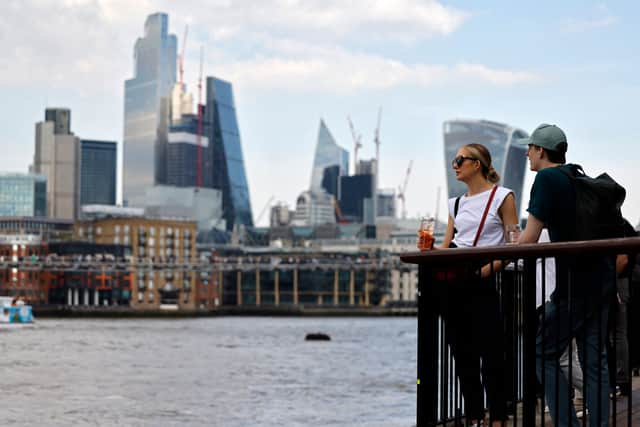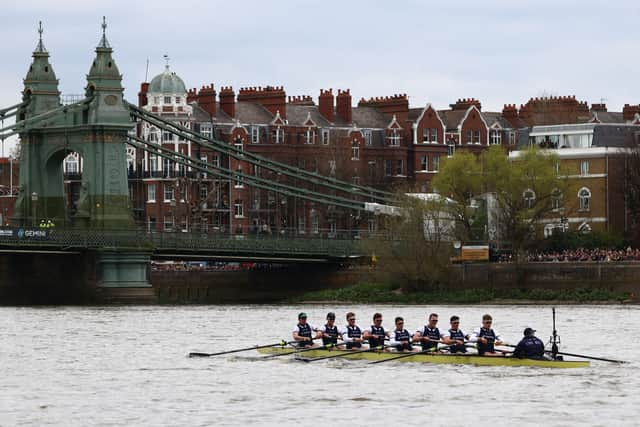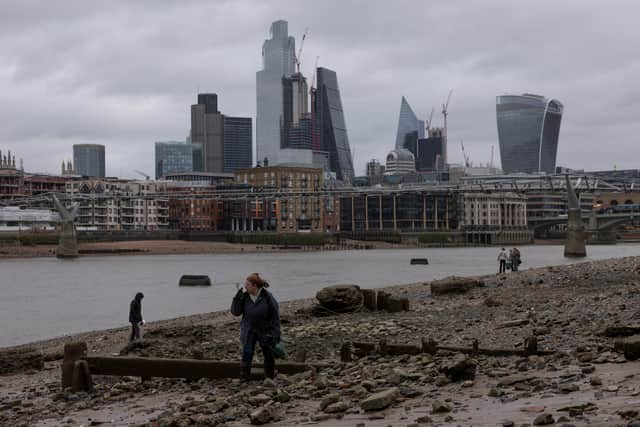River Thames: London’s waterway source dries up after scorching heatwave
and live on Freeview channel 276
The source of the River Thames has moved five miles further downstream than usual after it dried up during a scorching heatwave which saw the capital blister in 40C sunshine.
Environmental campaigners have warned the news is “unprecedented” and that global warming poses a “grave threat” to rivers.
Advertisement
Hide AdAdvertisement
Hide AdIt comes as the climate crisis has gathered pace - with heatwaves, wildfires, drought and storms across Europe.
Forecasters are continuing to warn of hotter temperatures to come, with a further blast of 30C heat predicted for next week.


The Thames has shifted from its official start point in Kemble, outside Cirencester, Gloucestershire, during the dry weather and is now more than 5 miles (8km) downstream.
Dr Rob Collins, science director at the Rivers Trust, told the Guardian: “Following prolonged dry weather, the source of the Thames in Gloucestershire has dried up, with a weak flow now only just about discernible more than 5 miles downstream (at Somerford Keynes).
Advertisement
Hide AdAdvertisement
Hide Ad“Under our changing climate we can anticipate the frequency and severity of such periods of drought and water scarcity to intensify, with increasing competition for a dwindling resource and devastating impacts on aquatic life.”
While Christine Colvin, advocacy director at the charity, added: "What we’re seeing at the source of the iconic River Thames is sadly emblematic of the situation we’re facing across the country, now and in the future.


“Whilst it’s not uncommon for the source to be dry in the summer, to only be seeing the river flowing five miles downstream is unprecedented.
“The climate crisis is leading, and will lead, to more extreme weather including droughts and heatwaves. This poses a grave threat to rivers and, as a result, the wider landscape.”
Advertisement
Hide AdAdvertisement
Hide AdShe continued: “We’re going to need to act at all levels to build resilience against this inevitable future.
“This means detecting household leaks, fixing mains infrastructure leaks, more efficient water use domestically plus implementing sustainable drainage solutions as part of desperately needed green infrastructure."


Met Office experts have said little rain is expected in the next week, while temperatures will remain cooler than in previous weeks, but could still reach the mid-30s.
“Many areas of the UK, especially the south, will witness temperatures several degrees higher than average, but these values are likely to be well below the record-breaking temperatures we saw in mid-July,” chief forecaster Steve Willington said.
Advertisement
Hide AdAdvertisement
Hide Ad“As the high pressure builds there is very little meaningful rain in the forecast, especially in those areas in the south of England, which experienced very dry conditions last month.”
Thames Water has not yet brought in a hosepipe ban in London, but has asked users to conserve water by taking shorter showers and turning off the tap when brushing their teeth.
While areas including Kent and Sussex are now experiencing restrictions on water use.
Mark Lloyd, Rivers Trust chief executive, told the Times: “Every year we get to this perilous position and at the last possible moment, when the rivers are at their lowest, we get discussion of temporary use bans.
Advertisement
Hide AdAdvertisement
Hide Ad“Announcing it at the last minute causes people to rush to wash their cars and fill paddling pools, and causes an increase in demand.
“This should happen before the rivers come to a desperate condition and there’s not enough water for wildlife.”
